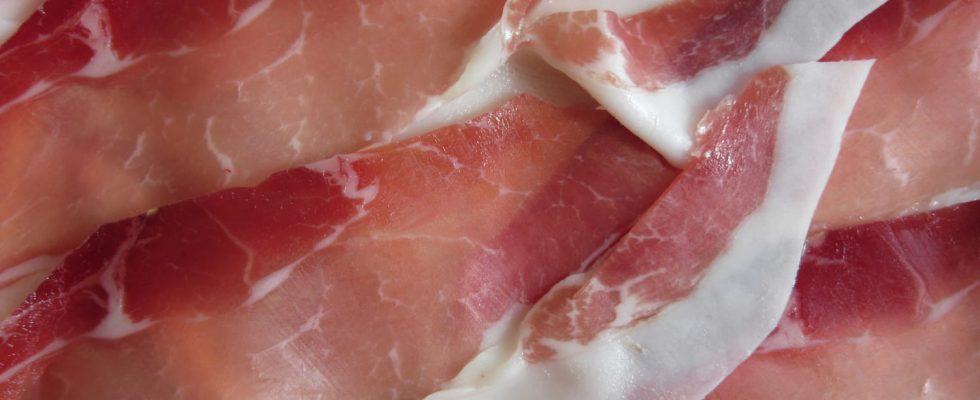Dry-cured ham is a cold meat made from pork legs, salted and dried for several months. It hides some well-kept secrets about what’s inside.
Dry-cured ham is a traditional cold meat made from the hind legs of the pig. It is undoubtedly one of the most popular cold cuts, especially since there are many varieties in the world, likely to suit all tastes. And if you are a true lover, then you know that one of them is considered a little wonder for the palate : Serrano ham. A dish that holds many surprises.
The first: serrano actually has little to do with Iberian ham. It is fatter, because selected pigs have the ability to infiltrate fat into muscle. After salting and washing, comes the refining. Temperature and humidity must then be monitored at all times and it is at this stage that the salt concentration of the rooms is equalized. It generally lasts between 45 and 90 days, depending on the parts. The aromas and nuances are then developed during aging, up to 18 months.
Serrano ham also has another secret that few people know: the quality of its white part. It would indeed be a shame to think that the white which it generously displays at its edges is an uninteresting piece of fat, to be left on the side of the plate! The fat in Serrano ham is obviously edible and even delicious. It is rich in monounsaturated fatty acids, which are beneficial for the heart, by consuming it sparingly of course.
Aitor Trabanco, dietitian nutritionist, interviewed by El Espanol praises this source of protein, minerals and vitamins. Proteins of high biological value that are essential for tissue growth and repair. Serrano ham is also a good source of iron, calcium and zinc.
To fully enjoy the taste of Serrano ham, it is important to enjoy it at room temperature. This will allow the fat to soften and release its flavors. It can be enjoyed alone or as an accompaniment to other foods, such as bread, fruits or vegetables.
And French hams?
All cured hams are characterized by a multitude of flavors, which vary according to farming methods, curing recipes and local traditions. In France, for example, dry-cured ham is made from pork legs raised outdoors.
The meat is then salted and dried for several months, or even several years for certain exceptional products such as black pork from Bigorre. This process allows the ham to develop a unique flavor, depending on its region of origin and diet. The fats from acorn-fed Iberian pork, for example, will therefore have a better nutritional profile than industrial ham.
